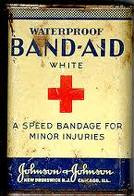Inventions and Technological Advancements
The 1920's were a time that many inventions were made. Improvements were being made in all kinds of areas such as fashion, transportation, manufacturing, medical science, and technology. All of these inventions have made drastic improvements in life from the twentieth-century up to life now.(http://www.buzzle.com/articles/inventions-of-the-1920s.html).
Car with Combustion Engine: Invented in 1920

Before the 1920's, cars had steam engines that were extremely expensive. Henry Ford was the inventor of the first car that had a combustion engine. This kind of car was a lot cheaper than the cars earlier made. Henry Ford, Ford Motor Company founder, was a leading manufacturer of cars due to a cost-effectve assembly line and standardized production. (http://www.buzzle.com/articles/inventions-of-the-1920s.html)
Radio/ Television Transmission: Invented in 1920

The radio was among one of the most popular technological advancements in the 1920's. Radio transmission was a very complicated task and was done by inefficient machinery. A Swedish-American engineer, Ernst Alexanderson, was the person who invented a frequency alternator for radio transmission in the 1920's. He also created other transmissions and lamps for televisions. (http://www.buzzle.com/articles/inventions-of-the-1920s.html)
Traffic Lights: Invented in 1920

A police officer, William Potts, from the Detroit area in Michigan was the person who invented the traffic light. His invention was created by using wires and three different colored lights; red, green, and amber. The first traffic light was installed in the region of Woodward and Michigan Avenues. (http://www.buzzle.com/articles/inventions-of-the-1920s.html)
Band-Aid: Invented in 1920

The "Band-Aid" was created by Earle Dickson. This idea was first created when his wife had an injured hand. Dickson too a piece of gauze and taped it to his wife's hand. Dickson started selling this strip of gauze and tape. Four years later, Johnson & Johnson put it on a mass scale production line. It was later named the "Band-Aid" (http://www.buzzle.com/articles/inventions-of-the-1920s.html)
Hair Dryer: Invented in 1920

The vacuum was a common hair dryer for all women before the 1920's. They dryed their hair by sticking a pipe in the exhaust part of a vacuum. The very first hair dryer was invented in 1920. It had some overheating problems but women preferred the hair dryer over a vacuum cleaner. (http://www.buzzle.com/articles/inventions-of-the-1920s.html)
Lie Detector: Invented in 1921

John A. Larson, who was a medical student in California, was the inventor behind the lie detector. You may also know it as the polygraph machine. This machine was invented in 1921. The way you knew somebody was lying was by looking at the pulse rate that was attached to the person in which the machine measured.cating that the person was lying. (http://www.buzzle.com/articles/inventions-of-the-1920s.html)
Rocket: Invented in 1926

Robert Hutchings Goddard was the inventor of the first ever liquid-fueled rocket. His developments of this work came upon during the First World War. Goddard has over 214 patents in rocketry. It's no wonder that he came up with the first rocket with liquid-fuel. (http://www.buzzle.com/articles/inventions-of-the-1920s.html)
Penicillin: Invented in 1928

An antibiotic that is known world-wide today was invented by Sir Alexander Fleming. This antibiotic is called penicillin. Fleming was a scientist that studied bacteria. Penicillin was not popular until after World War I because the FDA did not approve of it. After the war, it became used as a life-saving drug. http://www.buzzle.com/articles/inventions-of-the-1920s.html)
Frozen Food: Invented in 1929

What better to have than frozen food! The man behind frozen food goes by the name of Clarence Birdseye. At his packing company, which he started in 1924, he introduced a new system of preserving foods such as meats and vegetable in cardboard cartons. These cartons were later exposed to high pressure which would freeze them. Birdseye ended up succeeding in receiving a patent for his new system that froze food. (http://www.buzzle.com/articles/inventions-of-the-1920s.html)
